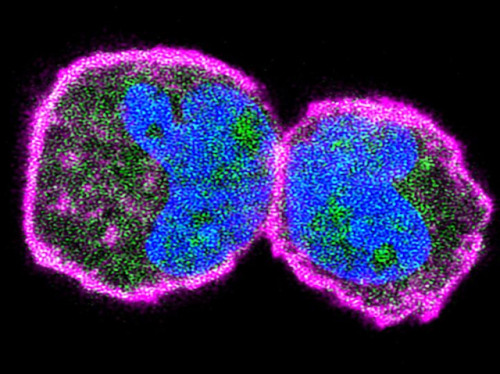
Making Contact
In multicellular organisms, fundamental processes enabling cells to grow, move and communicate rely on connections between cells and their environment, known as the extracellular matrix. Membrane proteins called integrins are critical to linking cells to this matrix, but they themselves need to associate with another protein, talin, in order to be active. Researchers have only recently uncovered the specific mechanisms behind this process: talin binds to lipids [fat] in the cell membrane, causing structural changes that reveal a previously-hidden site, which then contacts integrin. In cells with talin mutants lacking their membrane-binding portion (pictured, with the cytoskeleton protein actin in pink, and cell nuclei in blue), talin (in green) accumulates in the centre of the cell rather than moving to the membrane, and connections with the extracellular matrix are compromised. As processes requiring integrin are involved in cancer progression, a better understanding of talin’s role could suggest new therapeutic approaches.
Written by Emmanuelle Briolat
- Image from the Izard laboratory, Scripps Research
- Cell Adhesion Laboratory, Department of Integrative Structural and Computational Biology, The Scripps Research Institute, Jupiter, FL, USA
- Image copyright held by the original authors
- Research published in PNAS, October 2018
You can also follow BPoD on Instagram, Twitter and Facebook
Archive link






Комментариев нет:
Отправить комментарий